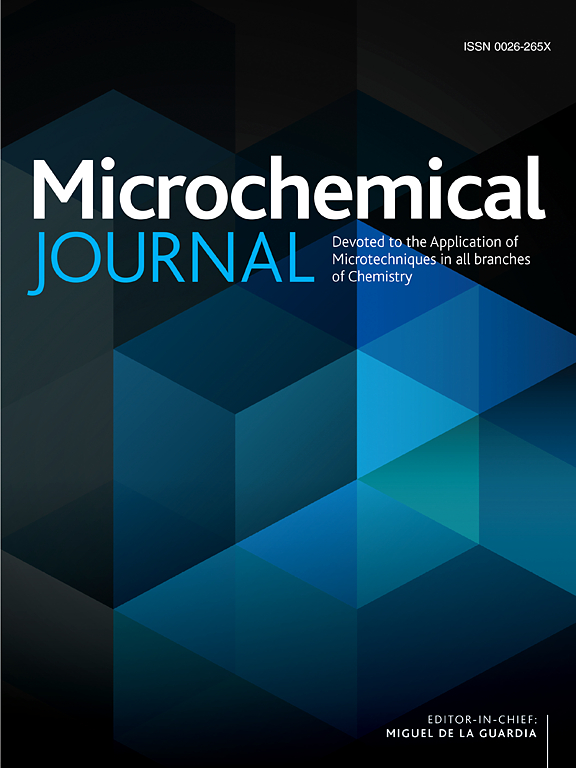Simultaneous determination of favipiravir and molnupiravir using TLC with smartphone image processing: applications in pharmaceuticals and environmental matrices
IF 4.9
2区 化学
Q1 CHEMISTRY, ANALYTICAL
引用次数: 0
Abstract
A simple, sensitive, cost-effective thin-layer chromatography (TLC) method was developed for simultaneous determination of favipiravir (FVP) and molnupiravir (MPV) using a smartphone-based imaging technique. Separation was achieved on silica gel 60 F254 TLC plates using methylenechloride:ethyl acetate:methanol:ammonia (6:3:4:1, v/v), with Rf values of 0.56 (FVP) and 0.80 (MPV). Visualization involved complex formation between the drug and cobalt thiocyanate. Image analysis was performed using a Samsung A23 smartphone and Color Picker software (v7.8.3) to measure luminescence intensity. The method demonstrated linearity in the range of 0.5–25 μg/mL for FVP, with a detection limit (LOD) of 0.23 μg/mL, and 1–25 μg/mL for MPV, with an LOD of 0.16 μg/mL. It was successfully applied for determination of FVP and MPV in pharmaceutical formulations and environmental water samples. Results were statistically equivalent to HPLC-UV (FVP) and UV-spectrophotometric methods (MPV) (p > 0.05). Greenness assessment using Eco Scale and AGREE tools confirmed the method as eco-friendly, economical, and sustainable.

智能手机图像处理薄层色谱法同时测定法匹拉韦和莫诺匹拉韦:在药物和环境基质中的应用
建立了一种基于智能手机成像技术的法匹拉韦(FVP)和莫努匹拉韦(MPV)的薄层色谱(TLC)同时测定方法。在硅胶60f254薄层色谱板上采用氯化亚甲基:乙酸乙酯:甲醇:氨(6:3:4:1,v/v)进行分离,Rf值分别为0.56 (FVP)和0.80 (MPV)。可视化涉及药物和硫氰酸钴之间的复杂形成。使用三星A23智能手机和Color Picker软件(v7.8.3)进行图像分析,测量发光强度。FVP在0.5 ~ 25 μg/mL范围内呈良好的线性关系,检出限为0.23 μg/mL; MPV在1 ~ 25 μg/mL范围内,检出限为0.16 μg/mL。该方法可用于制剂和环境水样中FVP和MPV的测定。结果与HPLC-UV (FVP)和uv -分光光度法(MPV)在统计学上相当(p >;0.05)。使用Eco Scale和AGREE工具进行的绿色评估确认了该方法的环保性、经济性和可持续性。
本文章由计算机程序翻译,如有差异,请以英文原文为准。
求助全文
约1分钟内获得全文
求助全文
来源期刊

Microchemical Journal
化学-分析化学
CiteScore
8.70
自引率
8.30%
发文量
1131
审稿时长
1.9 months
期刊介绍:
The Microchemical Journal is a peer reviewed journal devoted to all aspects and phases of analytical chemistry and chemical analysis. The Microchemical Journal publishes articles which are at the forefront of modern analytical chemistry and cover innovations in the techniques to the finest possible limits. This includes fundamental aspects, instrumentation, new developments, innovative and novel methods and applications including environmental and clinical field.
Traditional classical analytical methods such as spectrophotometry and titrimetry as well as established instrumentation methods such as flame and graphite furnace atomic absorption spectrometry, gas chromatography, and modified glassy or carbon electrode electrochemical methods will be considered, provided they show significant improvements and novelty compared to the established methods.
 求助内容:
求助内容: 应助结果提醒方式:
应助结果提醒方式:


